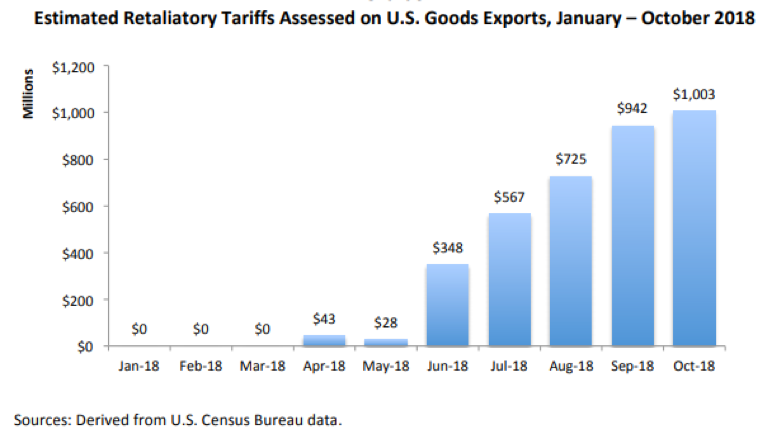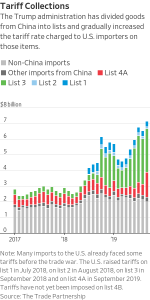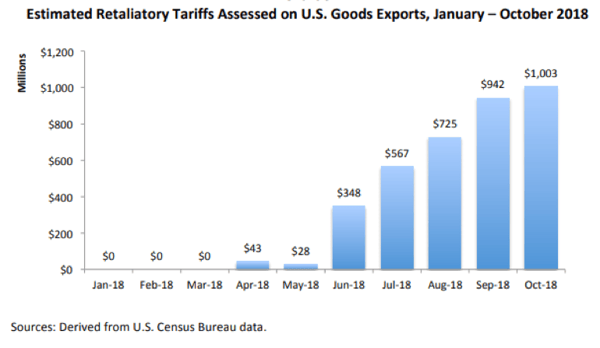
 According to the Wall Street Journal, the Trump Administration is considering removing some of the tariffs against China. There have long been tariffs, but not to the extent since the escalation in late 2018. So far, the tariffs have netted the U.S. Treasury an estimated $5B. Tariffs on imported products for the rest of the world accounted for $2B.
According to the Wall Street Journal, the Trump Administration is considering removing some of the tariffs against China. There have long been tariffs, but not to the extent since the escalation in late 2018. So far, the tariffs have netted the U.S. Treasury an estimated $5B. Tariffs on imported products for the rest of the world accounted for $2B.
If your company buys from China, the strain placed by these tariffs has been significant.
Why Tariffs?
It seems the one of the key negotiation points in this tariff war is retaliation for China’s “refusal to change intellectual property rights-related acts, policies and practices that the Office of the U.S. Trade Representative (USTR) had determined were adversely affecting U.S. companies.”
U.S. law is mature and respected in these areas, but other economies around the world do not adhere to the same legal standards. In our world of fresh food, this might equate to seed genomes, branding rights or other trade secrets bound by U.S. and other international laws.
I’ve certainly heard my share of stories of stolen genomes.
Packaging has also been the target of counterfeiting. It seems brands from the U.S. are valuable and fetch a higher price at retail. Packaging specialists in the fresh food industry tell me stories of their packaging completely copied, right down to the lot code, on various fruits and vegetables sold in Chinese marketplaces.
To combat this issue, we need complete traceability on products bound for the Chinese market, including tamper-proof consumer packaging.
Retaliatory Tariffs But tariffs are a two-way street. To fight back, China implemented a counter strategy and issued their own retaliatory tariffs. These tariffs have been assessed on good exported from the United States for sale and use in China. A great resource to learn more about tariffs and the impact they have on our two economies is The Trade Partnership Worldwide, LLC.
But tariffs are a two-way street. To fight back, China implemented a counter strategy and issued their own retaliatory tariffs. These tariffs have been assessed on good exported from the United States for sale and use in China. A great resource to learn more about tariffs and the impact they have on our two economies is The Trade Partnership Worldwide, LLC.
What’s Coming
There is little doubt that the tariffs have had a negative impact on trade, but they can’t go on forever. Those of us watching this trade war unfold are waiting for the day when it is behind us and the negotiations result in greater protections for trading partners on both sides. Keep your eye on U.S. 301 Final List 3. This list of products carries most of the fresh food items such as seafood, fruits and vegetables. It currently carries a 25% tariff.
With Procurant’s reach inside of China and our roots in U.S. fresh food production, we’re looking forward to an expansion of trade on both sides of these two mega-economies. We fully anticipate the U.S. and China will reach an agreement as we get closer to the U.S. election in November 2020. China has a huge population to feed and the Chinese consumer has a strong demand for safe, trusted food from the United States. Suppliers here know their food is judged first in the world in terms of food safety and would jump at the chance to improve their FOB returns and develop long term, trusted relationships with Chinese buyers.
I’m excited about this new emerging landscape, and about Procurant’s potential to help growers and shippers take advantage of business opportunities in international markets. And of course, I’m always happy to talk!
Lorem ipsum dolor sit amet, consectetur adipiscing elit

These Stories on Food Biz Buzz
Procurant USA LLC
475 Alberto Way - Suite 230
Los Gatos, CA 95032
1-669-221-1026
info@procurant.com
